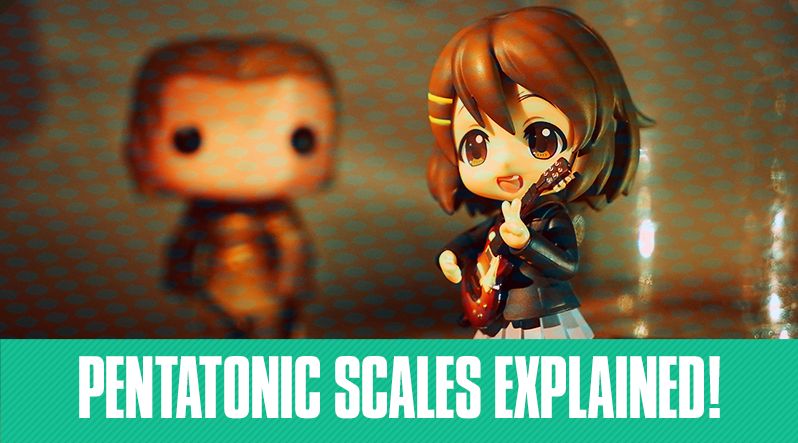The pentatonic scale is the first scale any beginer guitar player should learn.
It’s easy, it sounds great, and can be applied to almost any genera or song.
The pentatonic scale is made up of 5 notes (‘penta’ is Greek for ‘five’) derived from the standard major scale or minor scale.
This pattern creates a ‘box’ on the fretboard which is easily movable and playable all over the neck.
The A minor pentatonic scale uses notes A, C, D, E and G.
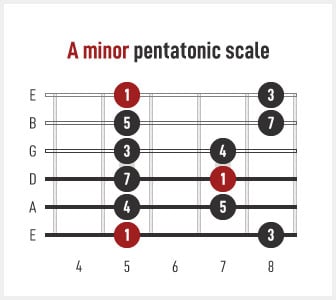
One of the reasons for the pentatonic scale’s popularity and ease of use is that when you play the scale directly, it already sounds like music.
All of the notes within the scale are diatonic (fit within a key).
There are no ‘weird’ scale degrees or off-sounding notes.
Just play the pentatonic scale up and down and it will fit into a song or key.
It’s guaranteed to sound good.
Another way to think of the pentatonic scale is - to go to a piano and play all the black keys - that’s a pentatonic scale!
There are a few different qualities to this scale including major pentatonic, minor pentatonic, or the blues scale by adding one note.
Here are 5 different ways you can play the pentatonic scale on guitar.
Minor Pentatonic Scale
First, the minor pentatonic scale.
We start with the minor instead of major because the minor pentatonic lends towards blues and rock licks more naturally than the major.
The minor pentatonic scale a 5-note pattern built from the standard minor scale.
Where the minor scale has 7 notes, the pentatonic scale has 5.
Except this time you WON’T play the 2nd and 6th scale degrees of the minor scale.
You’ll be playing notes notes A, C, D, E and G with the scale degrees being 1, b3, 4, 5 and b7.
Here’s what a minor pentatonic scale looks like using A Minor Pentatonic:
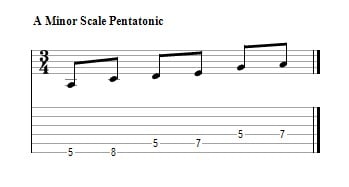

It's always a good idea to use a scale finder tool to help you with new patterns.
Check out the lesson below where Gary will show you how to play an E minor pentatonic.
E minor pentatonic scale is a great first scale to learn because you can play it easily even on the open strings.
Major Pentatonic Scale
The major pentatonic scale is built from the standard major scale.
All you’ll need to do is NOT play the 4th and 7th scale degrees of the major scale and you’ll get the major pentatonic scale.
Check it out using the A major pentatonic scale:
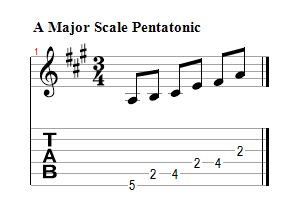
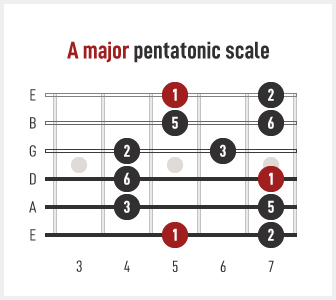
Minor Blues Scale
The minor pentatonic acts as the base for what guitar players call the minor blues scale.
This scale uses the same pattern except there’s an additional note; the b5 or the ‘flat 5.’
You build the Minor Blues Pentatonic scale with scale degrees 1, b3, 4, b5, 5 and b7.
Here’s what an A minor blues scale looks like:

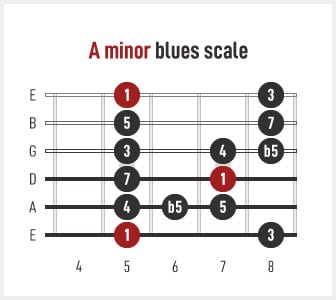
Check out this video where Mike will teach you how to play this Blues Scale step by step.
Jazz Pentatonic Scale
Using a simple A minor pentatonic pattern, you can jazz up your scales and licks by incorporating the E minor pentatonic scale within A minor.
The Em pentatonic scale works in the key of Am because there are overlapping scale degrees -
Am key: A, B, C, D, E, F, G

Em pentatonic scale: E, G, A, B, D
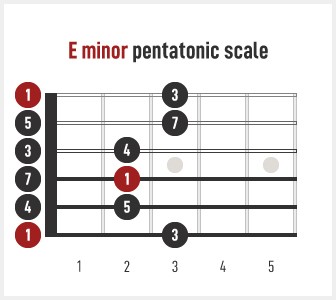
In the video example below, Anders plays an A minor chord and then proceeds to play an E minor pentatonic scale over it.
Notice how it sounds ‘out’ and a bit strange?
But it works!
The important thing is resolving your Em pentatonic licks with the correct notes emphasizing A minor, which is the key you are in.
Playing the Pentatonic Scale on One String
Lastly, you can play the entire minor pentatonic scale on one string.
It’s a great idea to know all the different ways you can play this cornerstone scale.
It can get a bit tricky once you get up the neck. Be sure to reference the standard minor pentatonic scale pattern if you get lost.
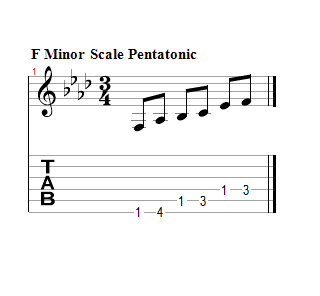
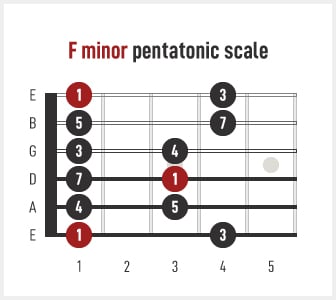
Anders will show you how to play the F minor pentatonic scale using a single string. Check out the lesson here.
Bonus Tip
To really understand how this scale can be applied to your playing, learn or transcribe your favorite guitar solos.
By hearing how the pros utilize the pentatonic scale, you will deepen your understanding of the scale and the guitar as a whole.
You will also learn some cool and interesting licks built from the pentatonic scale which you might not have come up with on your own simply practicing the basic block pattern.
Conclusion
The Pentatonic scale is probably the most important scale to know when learning how to play guitar.
It’s so easy to learn and implement in your playing.
All of the great guitar players use this scale in their soloing and riff building.
Once you get your fingers around this scale, you’ll start to hear it being used in your favorite music.
Get this scale down and you’ll have the key to play in most guitar situations!
FAQ
What are the 5 notes in the pentatonic scale?
The pentatonic scale, true to its name "penta" meaning five, has just five notes. For example, in the key of C major, the notes are C, D, E, G, and A. It's like taking the major scale and skipping a couple of notes.
What are the 5 positions of the pentatonic scale?
They're like different ways to play the same notes all over the fretboard. Each position starts on a different note of the scale but uses the same five notes. It's like having five different paths to hike up the same mountain. Guitar Tricks actually has some great guitar lessons that walk you through each position.
How do you explain the pentatonic scale?
The pentatonic scale is simple, versatile, and fits almost any occasion. It's a five-note scale that's found in cultures all over the world, and because it lacks some of the more dissonant intervals found in other scales, it tends to sound more harmonious and pleasing to the ear.
What is so special about pentatonic scales?
The pentatonic scale's magic is in its simplicity and universality. It's easy to learn and can be used in a ton of musical styles, from blues and rock to pop and folk. It's like a universal language in the music world!
Is it hard to learn the pentatonic scale?
Not really! It's one of the easiest scales to get the hang of, especially on the guitar. The patterns are pretty straightforward, and once you've got them down, you can start jamming along to songs. Guitar Tricks does a great job at breaking it down for people taking beginner guitar lessons.
Can you play any song with the pentatonic scale?
Well, not every song, but a lot of them! Especially in genres like blues, rock, and pop. It's a great tool for improvising solos and creating melodies. It's not a one-size-fits-all, but it's pretty close.
What is the easiest scale on a guitar?
The easiest scale is probably the minor pentatonic scale. It has a simple box pattern that's easy to memorize and play, and it's super useful for soloing in a variety of musical styles.
Should I learn the major or pentatonic scale first?
I'd say start with the pentatonic. It's simpler and a great foundation for understanding basic guitar playing. Plus, it's a lot of fun to play. Once you're comfortable with it, the major scale will make more sense and be easier to tackle.
In what order should I learn scales?
Start with the minor pentatonic, then move to the major pentatonic. After that, tackle the major scale and its modes. This progression builds your skills step by step. Guitar Tricks has lessons structured in a way that makes this learning process smooth and enjoyable.
